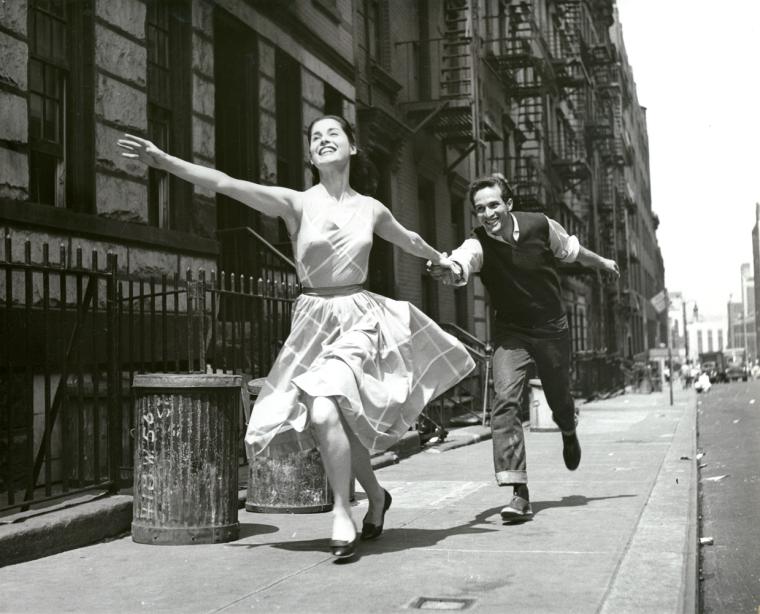Today marks the 55th anniversary of the Broadway premiere of Leonard Bernstein’s West Side Story.
A racially-charged retelling of Romeo and Juliet, West Side Story is set in the “blighted” West Side of 1950s Manhattan, the potent themes of star-crossed love and gang rivalry successfully translated from 16th century Italy to 20th century New York by book-writer Arthur Laurents and lyricist Steven Sondheim. The premiere was timely. One day before the curtain rose on West Side Story, America had witnessed a key event in its Civil Rights Movement with the forced integration of Central High School in Little Rock, Arkansas.
Five years later, Bernstein, then music director of the New York Philharmonic, moved the orchestra’s home from Carnegie Hall to nearby Lincoln Center, the construction of which had cleared away much of the neighborhood portrayed in the musical, ironically displacing Tony and Maria’s real-life counterparts as part of Robert Moses’ urban renewal program.

Yes, in many ways West Side Story reflected the drama of its time, flying in the face of racial taboo by bringing together a Puerto Rican girl and a Polish American boy, while also bringing together ballet and popular dance, opera and musical theater, with the attendant implications regarding class and the perception of “high” vs. “low” art.
Of course, when I first saw the West Side Story movie as a child, none of this factored into my perception of the musical, at least not consciously. What jumped out at me was the beauty of the dancers’ movement and the infectious, sometimes tragically beautiful music.
Even in college, when I played piano and celesta in Bernstein’s suite of orchestral movements from the musical, called Symphonic Dances from West Side Story, all I could focus on was the music. I still get a thrill when I think about playing that piece — my heartbeat literally quickens a bit — with its catchy dance tunes and heart-wrenching arias (for an example of the latter, watch this, starting about 0:35).
http://www.youtube.com/watch?v=N5-PMNL2djg
Looking back, I see now that West Side’s socio-political message was probably a larger part of my appreciation of the work than I realized at the time. Raised in a blue collar environment, I was mostly surrounded by the culture of rock music (with a little polka here and there), while my mother and grandmother instilled in me an appreciation of Mozart and Beethoven, which ultimately led to hours and hours on the piano bench. My young life revolved around a mix of “high” and “low” art, and West Side’s expert mixing of “popular” and “art” music probably appealed to me far more than I realized at the time.
Bernstein, also from a blue collar background, was perhaps the first composer to endeavor to truly marry the compositional rigor of art music with the vibrant spontaneity of popular music, and see the result earn a widespread and lasting influence. The 2009 Broadway revival of West Side Story sold over one million tickets during its two-year run. This clip from Bernstein’s 1973 Harvard lectures perfectly summarizes his views on the relationship of high and low art, with prophetic pronouncements regarding a “great new era of eclecticism.”
Bernstein’s overarching use of words such as dignity, passion, and Earth (by which he means the harmonic series, and, ultimately, tonality) to describe the coming era of eclectic music may go against the grain of postmodern, relativistic thinking, but, as I witness more and more young composers attempting to fuse their formal education with their “popular” music backgrounds, I’m inclined to think Bernstein a true prophet.


Recent Comments
There are currently no comments.